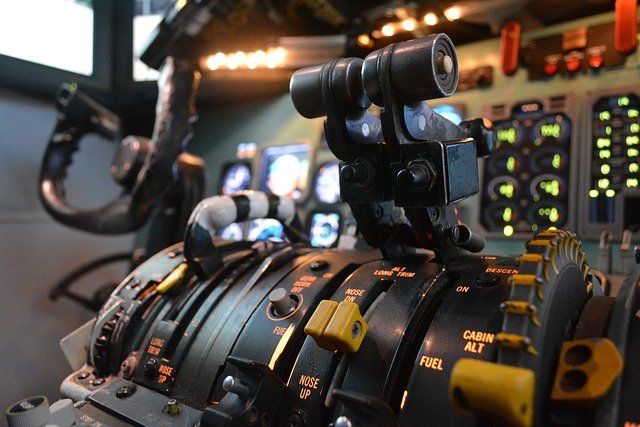Aviation Training United States
The United States is home to some of the world’s top aviation training programs, offering aspiring pilots and aviation professionals a wide range of opportunities. From private pilot certification to advanced commercial flight training, learn what to expect, how to choose the right school, and what steps are required to launch a successful aviation career in the U.S. Whether you're local or an international student, this guide covers essential information on training standards, costs, and career pathways.

What are the top FAA-certified aviation schools in the United States?
The Federal Aviation Administration (FAA) sets the standards for aviation training in the U.S., ensuring that all certified schools meet strict safety and educational requirements. Some of the top FAA-certified aviation schools include:
-
Embry-Riddle Aeronautical University: With campuses in Florida and Arizona, Embry-Riddle is renowned for its comprehensive aviation programs.
-
University of North Dakota: Offering a wide range of aviation degrees and certificates, UND is known for its state-of-the-art flight simulators.
-
Purdue University: Boasting a long history in aviation education, Purdue offers both flight training and aviation management programs.
-
Western Michigan University: Known for its diverse fleet of training aircraft and strong industry connections.
-
Arizona State University: Offers a unique blend of aviation and technology programs, preparing students for the future of aerospace.
These schools are known for their excellent facilities, experienced instructors, and strong industry connections, providing students with a solid foundation for their aviation careers.
What types of pilot licenses are available and what are their requirements?
The FAA offers several types of pilot licenses, each with specific requirements and privileges:
-
Student Pilot Certificate: This is the first step for aspiring pilots, allowing them to fly solo under supervision.
-
Private Pilot License (PPL): Requires a minimum of 40 flight hours, including solo flights and cross-country experience.
-
Commercial Pilot License (CPL): Requires at least 250 flight hours and allows pilots to be paid for their services.
-
Airline Transport Pilot License (ATPL): The highest level of aircraft pilot certificate, requiring 1,500 flight hours and extensive knowledge tests.
-
Instrument Rating: An add-on to other licenses, allowing pilots to fly in low-visibility conditions using instruments.
-
Multi-Engine Rating: Qualifies pilots to operate aircraft with more than one engine.
Each license has specific age, medical, and testing requirements set by the FAA. Aspiring pilots must also pass written exams and practical flight tests for each certification level.
What are the typical costs of aviation training and available financing options?
Aviation training can be a significant investment, with costs varying widely depending on the type of program and license pursued. Here’s a breakdown of typical costs:
| Training Type | Estimated Cost Range |
|---|---|
| Private Pilot License | $10,000 - $20,000 |
| Commercial Pilot License | $30,000 - $50,000 |
| Airline Transport Pilot License | $80,000 - $150,000 |
| Bachelor’s Degree in Aviation | $100,000 - $200,000 |
Prices, rates, or cost estimates mentioned in this article are based on the latest available information but may change over time. Independent research is advised before making financial decisions.
Financing options for aviation training include:
-
Federal student loans for degree programs
-
Private aviation loans from specialized lenders
-
Scholarships from aviation organizations and schools
-
GI Bill benefits for veterans
-
Payment plans offered by flight schools
Many students combine multiple financing options to cover the full cost of their training. It’s essential to research and compare different funding sources to find the most suitable and cost-effective solution.
How can international students apply for aviation programs in the U.S.?
International students interested in pursuing aviation training in the U.S. must navigate additional requirements:
-
Obtain a student visa (F-1 or M-1) by applying through a SEVP-certified school.
-
Meet English language proficiency requirements (usually through TOEFL or IELTS tests).
-
Secure appropriate medical certifications from FAA-designated medical examiners.
-
Obtain Transportation Security Administration (TSA) approval for flight training.
-
Ensure compliance with visa regulations throughout the training period.
International students should start the application process well in advance, as obtaining necessary approvals can take several months. Many U.S. aviation schools have dedicated international student offices to assist with the application process and provide ongoing support.
What career paths are available after completing flight training?
Completing aviation training opens up a wide range of career opportunities, including:
-
Commercial airline pilot
-
Corporate or private jet pilot
-
Flight instructor
-
Aerial firefighter or search and rescue pilot
-
Agricultural pilot
-
Air traffic controller
-
Aviation safety inspector
-
Drone operator
-
Test pilot
-
Military pilot (with additional military training)
The aviation industry also offers numerous non-flying careers that benefit from pilot training, such as aviation management, aerospace engineering, and aviation safety analysis. Many pilots also pursue entrepreneurial opportunities in fields like aerial photography, charter services, or aviation consulting.
Aviation training in the United States provides a solid foundation for a diverse and rewarding career in the aerospace industry. With world-class facilities, rigorous FAA standards, and a wide range of programs to choose from, aspiring aviation professionals can find the perfect path to achieve their goals. Whether you’re a domestic student or coming from abroad, the U.S. offers unparalleled opportunities to launch your aviation career.




